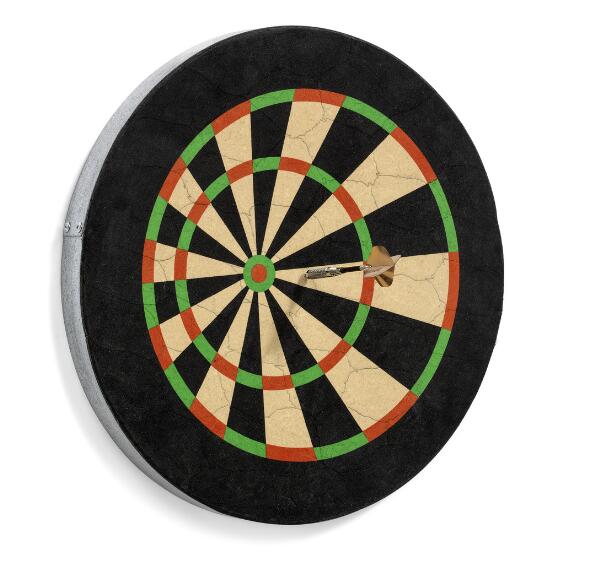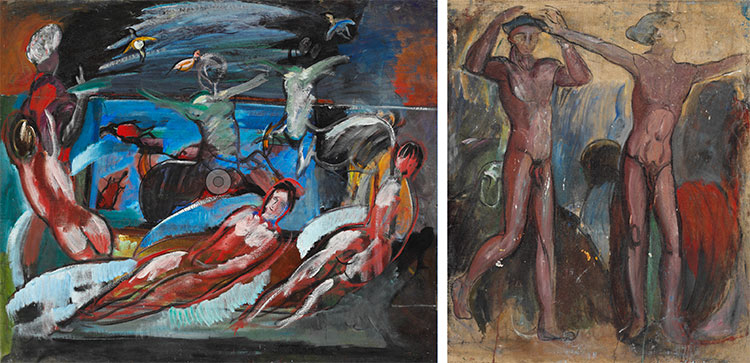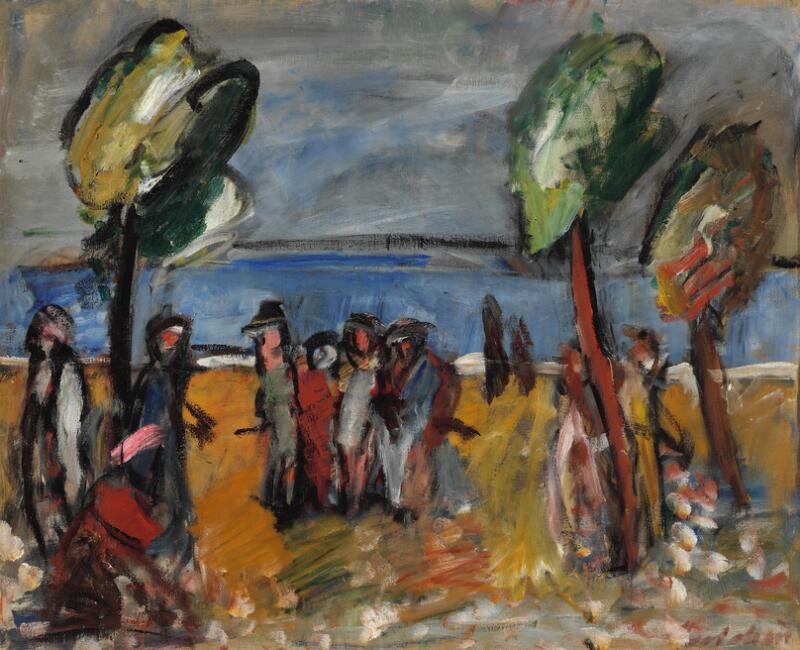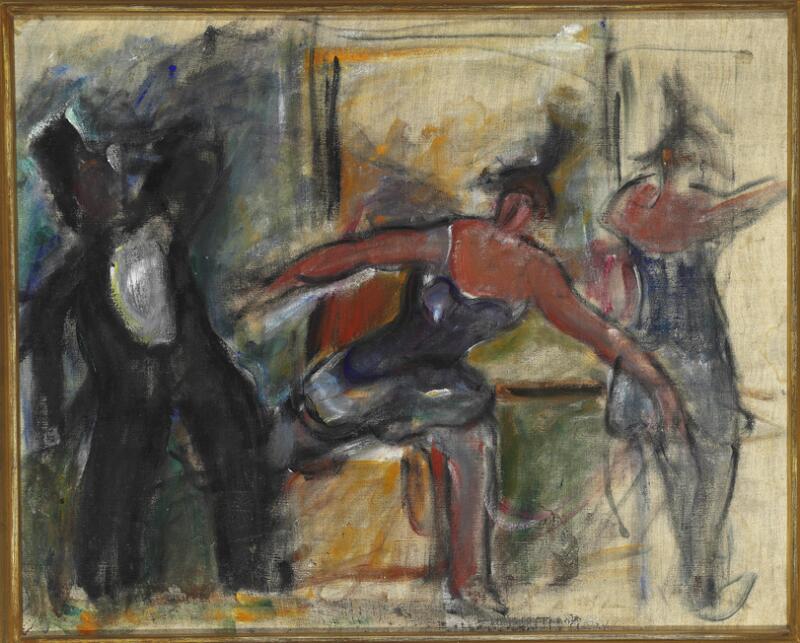Jens Adolf Jerichau – Daily Trials and Eternity
A rare collection of Jens Adolf Jerichau's works provides a unique view of the width in his work and shows an explosive artistic development, a life-long struggle with mental illness and a love life that jarred with the norms of the time.
“Jerichau was in the eye of the hurricane in his own time, but his paintings were outside of time and stretched back into eternity. It is a rich exhibition, rich in works and insights (…) Jerichau is here to stay. It is an enchanting vision.”
From the review in Weekendavisen, 21 November 2021, about Louisiana's exhibition with the artist.
Jens Adolf Jerichau (1890-1916) stands as a loner in the early part of Danish Modernism, and his brief life and intense artistic career was recently the subject of an extensive exhibition at Louisiana Museum of Modern Art, which was lauded with praise by the entire Danish corps of art critics. When we welcome you to this summer's Live Auction in Bredgade on 14 June at 4 pm, nine of Jerichau's works will be part of the line-up, eight of which come from the prominent art collection of Danish Tove and Ole Schierbeck. Several of these works were part of the exhibition at Louisiana.
A Modernist Steeped in Mythology
Jerichau's art shines brightly in Danish art history, and he has been an inspiration for several great Danish artists, including Asger Jorn and Per Kirkeby. Jerichau's early death by his own hand at the age of 26 and his abruptly concluded oeuvre has for many years made him a well-kept secret for the wider public. On the other hand, his intensely lived and contradictory life, his violent modernist maturation, his solitude among contemporary movements and not least his dramatic exit have fuelled a considerable mythologisation of his person and work.
“One evening I was walking alone in the alley by the church. The memories of the greatness of my lineage rushed over me. I felt, I was born for something specific, perhaps for the greatest thing ever in our family, I felt that Hørsholm was ours, the property of the Jerichaus, we had settled…”
Jens Adolf Jerichau, diary from when he was 19 years old.
Jerichau was born into a family where art was a thread binding the generations together. His grandfather of the same name, the grandmother Elisabeth Jerichau Baumann, uncle Harald Jerichau and father Holger Jerichau were all renowned artists. So, the path ahead was in some ways quite clear for the young man, and the quote above shows how Jerichau from an early age felt his calling as an artist.
Jerichau's Duality
The nine works at the auction share a modern and expressive idiom, but they also point back in time with their classical artistic sources of inspiration, references to ancient myths and focus on figuration. The fact that the works simultaneously pose strong existential questions makes them eternally relevant – even today in relation to the debate on gender and identity. The highlight is a sketch of his well-known work “Havguder” (Sea Gods) from 1916 and is related via its content to several paintings, including "Elskov" (Love-making) (1915) at ARoS and "Guldfuglen" (The Golden Bird) (1913-14) at Trapholt. In the work up for auction, the figures form a high-tension, undulating composition, and the reverse reveals another equally expressive work – “Figurkomposition (Grækere)” (Figure Composition (Greeks)) from 1913 – depicting two naked men.
|
This duality contains several perspectives and can of course simply be due to the lack of materials during the First World War, but it also shows the special work method of Jerichau, who liked to let the paint seep through the canvas to create a new work on the reverse – often with motifs lying outside the norms of society at the time as in this case. Here the work is "linked to the notion of the freedom he saw in ancient Greece, also when it came to intimate relations between men," as Louisiana wrote in the exhibition catalogue. It was this ‘double work’ that, together with “Landskab, Sydfrankrig” (Landscape, Southern France), ”Landskab med palmer, Sydfrankrig“ (Landscape with Palm Trees, Southern France) and “Påklædt Kristusfigur af Træ” (Dressed Christ Figure of Wood) was included in Louisiana's exhibition. |
|
|
From a Private Danish CollectionIt is a bit of a rarity that we can present such a large group of works from the earliest part of Danish Modernism. Eight of the nine Jerichau works on offer come from the collection of Tove and Ole Schierbeck, who had a personal relationship with the Jerichau family and built their collection with great dedication and empathy. Ole Schierbeck was born in 1917 – the year after Jerichau's death – and grew up in a house in Hørsholm, which was next door to Kavalerboligerne, where the Jerichau family lived for over 70 years. Therefore, Schierbeck knew the artist's family, and in his upbringing he walked the same paths that Jerichau had previously been on. Schierbeck therefore caught interest in art early on and later shared this passion with his wife. Together, they forged close friendships with some of the leading artists of the time, such as Axel Salto, who was the closest witness to Jerichau's time in Paris. Perhaps this acquaintance between Schierbeck and Salto was decisive for the couple’s decision to begin building their fine collection of Jerichau's works early on in their lives. |
|
|

For further information, please contact:
|
|
Niels RabenNiels RabenHead Senior Specialist / Auctioneer / Modern & Contemporary Art / København |
|
|
Niels Boe-HauggaardNiels Boe-HauggaardHead of Department / Modern & Contemporary Art / København |
|
|
Kathrine EriksenKathrine EriksenSpecialist / Modern & Contemporary Art / København |


